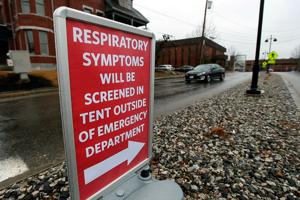Report tracks Maine’s changes in health care outcomes across past decade

(The Center Square) – The number of male Maine residents with multiple chronic conditions increased 33% from 2011 to 2019, according to a report from the United Health Foundation.
The 2021 Health Disparities Report looks at more than 30 health-related measures gleaned from data collected by the United Health Foundation, the philanthropic arm of UnitedHealth Group.
“Multiple chronic conditions generally mean having four or more chronic conditions,” said Dr. Rhonda Randall, chief medical officer of UnitedHealthcare Employer and Individual, part of UnitedHealth Group. “These are things like diabetes, heart disease, high blood pressure, high cholesterol, and others that you know, put a significant strain on someone’s life and also make them a higher risk for greater mortality.”
The report also showed a 26% decline in physical activity among college graduates. But it wasn’t all bad news for the state.
“Going in the right direction in Maine childhood poverty is going down,” Randall said. “Children who live in metropolitan areas have a decrease in childhood poverty 23 percent between the year 2005 and 2019.”
Other highlights from the report:
• Smoking among female adults decreased 20% between 2013 and 2019.
• The number of people with less than a high school education decreased 31% between 2009 and 2019.
• Lower disparities were found between males and females for child poverty, although there are higher disparities between Black and whites.
• Higher disparities were reported between whites and American Indian/Alaska Natives for frequent mental distress.
The report also found low disparities between metropolitan and non-metropolitan areas for unemployment, which is an important measurement of overall health, according to Randall.
“It’s not just our physical health that’s contained in this report,” Randall said. “We look at socioeconomic health. We look at mental and behavioral as well as physical health outcomes. And the unemployment rates have strong ties to other measures of health. If you are employed, you’re going to be more likely to have health insurance. If you are employed, you’re more likely to have higher health literacy and access to care.”
The data does not include 2020.
“We expect to see a significant number of them affected by the pandemic, many in negative ways, but also in some, I think we’ll see some bright spots,” Randall said. “I think that we’ll see some improvements in the access to high-speed internet. I’m hoping that see improvements in flu shots. I hope that we improvements in some behaviors, like more people quitting smoking. Because we know that that was a risk factor during the pandemic.”
Disclaimer: This content is distributed by The Center Square
